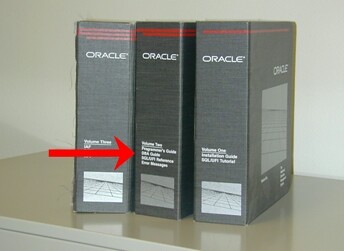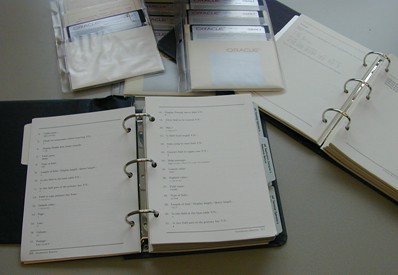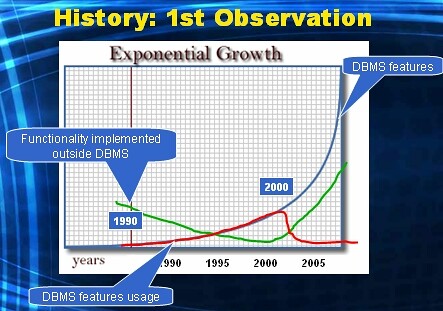"A set of principles for the IT-community regarding (database) application development"
Or maybe just: my vision on how database applications should be architected and implemented. Previous titles used to bring this message, were:
- "A database centric approach to J2EE application development"
- "A database centric approach to web application development"
- "Long live the fat database"
- "Harvesting the advantages of a database centric development approach"
- "Fat databases: a layered approach"
All rather dull titles, not? So ever since Miracle Mayday 2008 (where I had presented my vision yet again) which was held in Helsinki, Finland, and with the help of Mogens (after a couple of beers) the official title of this message has been set to "The Helsinki Declaration". There you have it, as he would have said.
A bit of history.
Before explaining what the declaration is all about, I usually start by describing a few observations as I have experienced them in the 20+ years of my ride on the Oracle wave. Here is observation 1.

We are in the year 1987. Oracle version 4. Above a picture of the full documentation set way back then. The arrow is pointing towards the chapter titled "DBA guide". The only chapter on the database: all other chapters dealt with "tools outside the database" such as: import/export, RPT/RPF, IAF/IAG (predecessor of SQLForms), etc.
Here's another one.

As you can see from the abundant use of white-space, there wasn't a whole lot of documentation to read. In fact you could study the full documentation set over weekend. Be ignorant on Friday afternoon. And a full-fledged Oracle expert on Monday morning.
I do not have a picture of the version 5 documentation set. But here's a picture of the (full) version 6 documentation set.

The arrow now points to the "Oracle RDBMS database administrators guide". A thick book which would take considerably more than a weekend to study. The other thick(er) one you see a bit more to the left, is the "SQLForms3.0 developer's reference".
Next up Oracle7:

Now mind you. This is *not* the full documentation set anymore. It's just the stuff for the database. So what was just one book in version 6, now has exploded into a dozen of books with Oracle7. Oracle7 of course was a huge leap forward at that time and started the "golden years" of the mid and late nineties for Oracle.
Finally I have a picture of the Oracle8i documentation set (database only again).

As you can see it doubled the amount of stuff to read compared to Oracle7. I (and my customers) stopped purchasing hardcopies of the documenation for Oracle9i and later versions. Pricing of harcopy documentation went up dramatically as I recall: Oracle wanted us to use the online documentation. Which we all started doing. But I bet that (had they been available) hardcopy versions of the documentation sets of 9i, 10G and 11G, would continue to double in thickness for every major release.
In the past twenty years we observe that the functionality (features) that is available to us inside the DBMS, has exponentially grown. These features enabled us to build database applications. Which is what we all started doing in the booming nineties. At first, with Oracle versions 6 and below which didn't offer much functionality yet inside the DBMS, other than SQL. I know, there was anonymous PL/SQL, but that was hardly used. We had to stuff all functionality into the client and built fat (sqlforms30) client applications. But as more useable features became available, which was definitely the case with the advent of Oracle7, we started pushing application logic into the DBMS (stored procs etc.). Why? Because we discovered that this created:
- More manageable applications
- More performant applications
So as features became available to us inside the DBMS, we started using them.
But then at the dawn of the new millenium, something happened. And that something misteriously made the role of the DBMS inside a database application project diminish to insignificant. Of course I'm talking about Java and J2EE here now, to which I will return in a later post. But as of the new millenium we are pushing all application logic out of the DBMS into middle tier servers. The functionality of stuff implemented outside the DBMS has exploded, and the feature rich DBMS is hardly used for anything but row-storage. Here's a picture from my presentation showing this.

The blue line shows the exponential growth of features available to us inside the DBMS.
The red line shows how we have adopted those features in the nineties, and ceased using them anymore in the new millenium.
The green line (follows from the red line) shows what part of a database application is implemented with technologies outside the DBMS.
This is the first observation. Three more to follow.
That's simple:
ReplyDelete* too much features need to be an expert to use all of these
* all fancy features should not be delegated to database. Database has only one role: persisting data, not making coffee and cut the grass. Developers's skill increase and they understand this pattern, frameworks too, and they leave these useless features to let database only do its true role
"Database has only one role: persisting data" ... if your comment is meant to be ironic then make this more evident, otherwise you may qualify yourself as a total ignorant in database theory.
DeleteYou'd better be an expert of framework(s) too, if that is the TOOL you use! One selects tools he knows best, all thing being equal.
ReplyDeleteIt would be interesting to see objective analysis/comparison(end app. performance, manageability of development/maintenance, ...)
of:
Database centric app VS. "framework" J2EE based
(for Enterprise application software of course)